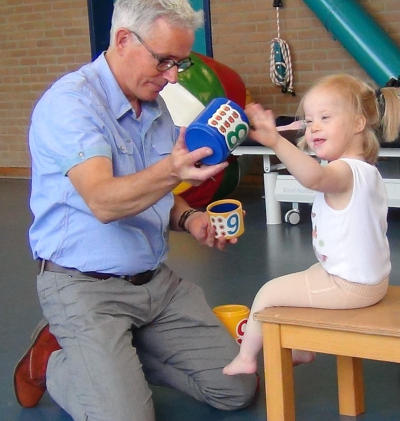
BMS method
Young children with Down syndrome often experience specific challenges in their motor development. Lauteslager has researched and described these challenges. He subsequently developed a motor assessment tool, Basic Motor Skills of Children with Down Syndrome (BMS), and a treatment method, Physiotherapy for Young Children with Down Syndrome. Each BMS assessment precisely identifies the treatment a child requires. By repeating this assessment every three months, the physiotherapist and parents gain insight into the child’s progress. Every three months, the treatment plan is updated based on these results.
Parents play a very important role in the treatment of their children. The physiotherapist works closely with them. Parents learn how to stimulate their child’s motor development during play and care activities through playful interactions.
Lauteslager describes this unique combination of assessment, treatment, collaboration with parents, and the positive outcomes of the BMS method in his book Children with Down’s Syndrome: Motor Development and Intervention (2004).
Lynn
The most important thing we have learned from Peter is to adjust our tempo to Lynn’s reaction speed. This allows her more time to move herself and practice independently. For example, when changing her nappy, we let her roll onto her side. We carefully observe whether she actively moves herself. If we move too quickly, she doesn’t need to do anything herself. By waiting a moment, Lynn almost rolls over by herself! These small, natural practice moments occur every day. It is these moments that effectively stimulate her motor development.